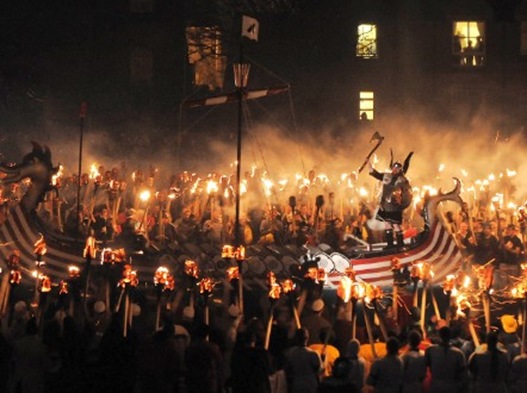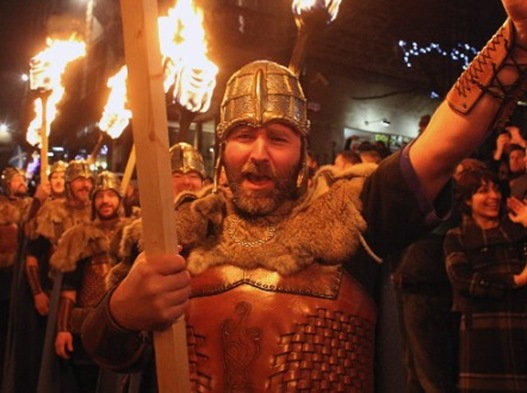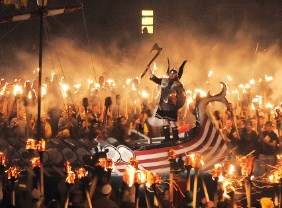CNN
March 10, 2014

There are ghosts at the British Museum.
Hulking, hairy, bloodthirsty warriors grunting in unison as they row the biggest warship of its kind the world has ever known.
Can the gallery curator see them, or am I the only one? He laughs — a little nervously: “Yes, you do get a sense of them.”
Looming before us is Roskilde 6, the largest Viking ship ever discovered, carefully reconstructed after 1,000 years languishing beneath the waves. At 37 meters long it’s double the size of the boat Christopher Columbus sailed to America.
Ghost armies or not, it is a sight to behold. The ship’s fearsome metal frame seemingly rises from a watery netherworld on a mission to conquer the globe — once and for all.
Built around 1025, it is the crown jewel in the museum’s major new exhibition exploring the Viking age, and it sails on an invisible wave past glass cases of ancient jewels, swords and skeletons.

“It’s huge. And you can’t stress that enough. Even by the standards of written descriptions of big Viking ships, this is massive,” says curator Thomas Williams — who, with his thick beard and carefully twirled mustache, resembles something of the modern-day Norseman.
“We read about ships of 35 oarsmen per side being extremely big, shockingly big. And this probably had about 40 oarsmen per side.”
If you saw this vessel on the horizon — with its elaborate carvings, animal head prow, and single sail billowing in the wind — it would have signaled serious trouble was on the way.
“To see this coming up the River Thames would have meant domination by a political elite,” says Williams. “It would have struck terror into people.
“I suppose in many ways it’s psychological warfare as much as anything else. You’re demonstrating your power through the sheer scale and awesomeness of this ship. And of course we’ve got this one, but we don’t know how many there might have been. Dozens, hundreds of ships … it’s frightening stuff.”

Danish discovery
It’s perhaps fitting that the boat was discovered in Denmark’s Roskilde Fjord by workers renovating the city’s Viking Museum in 1997.
Almost a quarter of the original timber remained, and it now lines the heart of the recreated metal structure on display in London.
Only a person of enormous wealth and power could have built a boat like this, with historians pointing to North Sea ruler at the time,Cnut the Great, a man described as: “Exceptionally tall and strong, and the handsomest of men, except for his nose.”
Long and sleek (the boat, not Cnut’s nose), it was designed for speed, featuring low sides so men could leap quickly onto land.
“This is really a troop carrier,” says Williams. “An amphibious landing craft to get lots of men across the sea as fast as possible.”
